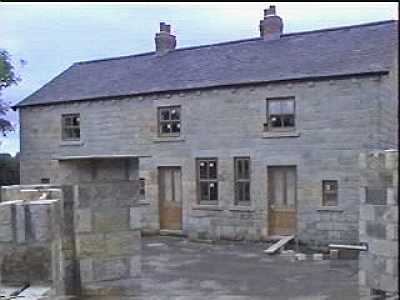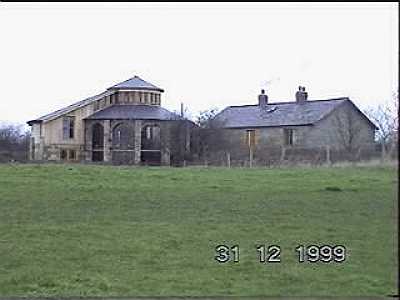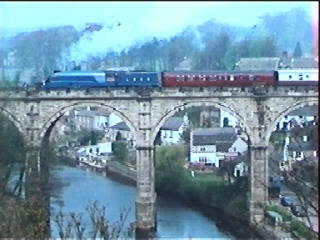Railway History There is a gap in our research now but there does not appear to be any major impact on Hay-a-Park until the coming of the railways and this is well documented in James Rogers' book, "Railways of Harrogate & District" (still available). Jim is a friend and colleague of mine and is a fine railway historian! I would like to extend my thanks to Jim for letting us "nick" the following information and quotes. Hay-a-Park used to have 2 railway lines running through it. The line still in use is the Knaresborough-York line (and the now dismantled line was the Knaresborough-Boroughbridge branch). Most of the embankment on the old Knaresborough-Boroughbridge line has been levelled and is now part of the restored quarry area. The Knaresborough-Boroughbridge line was staked out in July 1870 but tenders to construct it were not sought until November 1871. During its construction, on 14th October 1873, one navvy was killed and two seriously injured when seventeen ballast wagons ran away and were derailed and in the winter of 1874-75 severe weather stopped all work for ten weeks. The line was eventually opened on 1st April 1875.
Railway traffic declined after the war and by 1950 the average number of passengers using the Boroughbridge branch was only 15 per day. Consequently the passenger service was withdrawn from 25th September 1950, although goods traffic continued until 6th October 1964, when the line was closed. In 1955 the pick up goods began deliveries of fresh water to the railway cottages alongside Hazleheads Lane, Knaresborough (where the new Millennium house is being built), after a well previously used for their water became polluted.
The Knaresborough-York line was opened on 30th October 1848. The now famous Knaresborough viaduct was was intended to take the service through to Harrogate collapsed on 11th March 1848 - with the viaduct in ruins soil from a cutting on the Starbeck side of the Nidd could not be brought over the river where it was needed for an embankment to bring the line into Knaresborough, consequently when the line from York was opened on 30th October 1848 it terminated at Hay-a-Park Lane (now called Park Lane), about 1 mile from Knaresborough town centre, where a temporary station was built by Faviell and Sons for £363. Jim quotes,
The Hay-a-Park Lane-Knaresborough section of the line was eventually opened on 21st July 1851 There is now talk of re-opening a station at Hay-a-Park for the benefit of the fast growing Eastfield estate.
|





